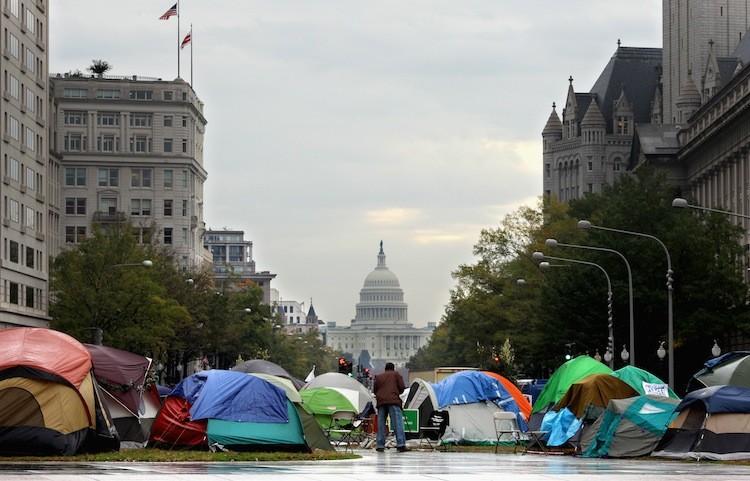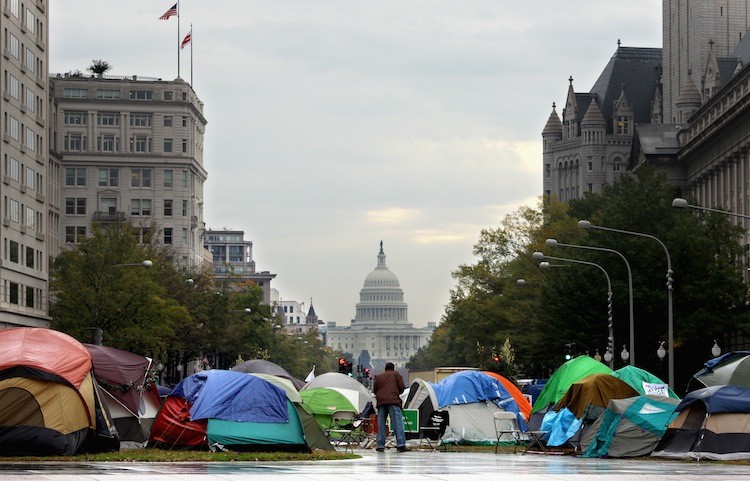With mounting debt, a tough economy, and a steady unemployment rate at 9.1 percent, Americans are anxious for solutions. But they may not be looking to Washington for answers. According to a recent Gallup poll, the dissatisfaction and distrust Americans feel toward government has reached an historic level.
In conducting its annual Governance survey, the polling firm asked, “On the whole, would you say you are satisfied or dissatisfied with the way the nation is being governed?” A record-high 81 percent said they were dissatisfied.
Of the dissatisfied, 92 percent identified as Republicans, and 65 percent Democrats. Gallup suggests this “perhaps reflects the shared political power arrangement in the nation’s capital, with Democrats controlling the White House and U.S. Senate, and Republicans controlling the House of Representatives.”
Criticism was highest toward the legislative branch, where 82 percent polled said they disapproved of the way Congress handled its job; 69 percent polled said “they have little or no confidence in the legislative branch of government,” which surpassed a previous high of 63 percent in 2010.
An earlier September poll by Gallup put Congress’s job approval rating at 15 percent, up slightly from the all-time low of 13 percent in August.
Also, 49 percent of Americans said they were alarmed at the size and expansion of federal government, believing “government has become so large and powerful that it poses an immediate threat to the rights and freedoms of ordinary citizens.” This is up 19 percent from just eight years ago.
Manifestations of this growing distrust can be seen in recent years, with the emergence of a conservative Tea Party movement in 2009, and more recently, the leftist Occupy Wall Street movement.
The Tea Party, sparked by the Troubled Asset Relief Program (TARP) and large federal stimulus spending packages, started out as a grassroots movement aimed at limiting government size and power, and reducing excessive spending.
Over the course of more than three years, loose-knit local groups have banded together under various organizations, the largest being the Tea Party Patriots, which “provides logistical, educational, networking, and other types of support to over 1,000 community-based Tea Party groups around the country,” according to its website.
Claiming “the impetus for the Tea Party movement is excessive government spending and taxation,” Tea Part Patriots defines its goals as to “secure public policy consistent with our three core values of Fiscal Responsibility, Constitutionally Limited Government, and Free Markets.”
Grassroots dissatisfaction has also spawned the recent Occupy Wall Street movement, which, despite a focus on the private financial sector and Wall Street, has also implicated the federal government in its accusation that democracy has been compromised.
According to occupywallstreet.org, the Occupy movement is “fighting back against the corrosive power of major banks and multinational corporations over the democratic process, and the role of Wall Street in creating an economic collapse that has caused the greatest recession in generations.”
Validity of Polls
Public polling has long come with criticism, denounced as a tool for politicians and media to twist perception and influence policy.
Frank Newport, PhD, is editor-in-chief of Gallup, and addressed the validity of polls in a Sept. 21 blog posting titled “Public Opinion Polls and Public Policy.”
Newport referenced long-standing criticisms of polls and pollsters, like Gallup, quoting the 1949 book “The Pollsters,” which, on its cover, describes itself as “an acute analysis of the polls as a threat to representative government and the democratic process,” and an “an indictment of the destructive influence of the polls on newspapers, legislators, and the public itself.”
More recently, he quotes the 2002 “Mobocracy,” which claims to illustrate “how the media’s obsession with polling twists the news, alters elections, and undermines democracy.”
Newport looks to Dr. George Gallup himself, and his 1944 book “A Guide to Public Opinion Polls.” Gallup, in response to the question of whether the “country will suffer when its leaders begin to pay a lot of attention to public opinion polls,” exerted that “The country will suffer when its leaders ignore, or guess, about the public’s views and make wrong estimates of their knowledge.”
The results of an Aug. 25 Pew Research Center poll are also in line with Gallup’s results of dissatisfaction with the country’s leadership, demonstrating a trend of declining confidence in government.
According to their data, 70 percent of Americans look unfavorably at Congress. When asked to describe their feelings about the government, 86 percent said they are either frustrated (60 percent) or angry (26 percent).
Only 11 percent surveyed said they are content with the federal government, down from 53 percent in 2001.
With additional reporting by Steve Gigliotti.
Americans Dissatisfied With Governance: Gallup
With mounting debt, a tough economy, and a steady unemployment rate at 9.1 percent, Americans are anxious for solutions. But they may not be looking to Washington for answers.
By Jim Fogarty
11/2/2011
Updated: 10/1/2015






Friends Read Free